Shopping is a radically different experience outside of America
We absolutely love shopping in the world’s souks, bazaars, tianguis, and even the occasional stall, cart, or blanket right on the street.
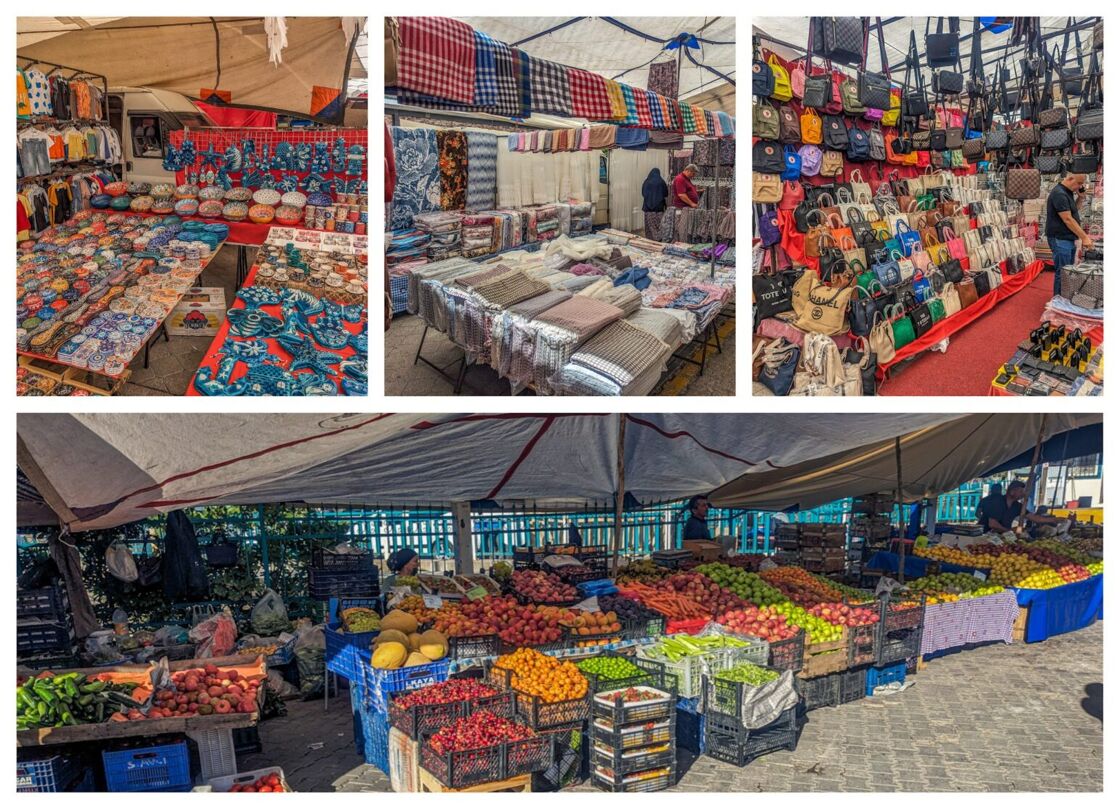
Last year, Brent and I lived in Fethiye, Turkey, just a few blocks from a public market that set up shop once a week.
At the ” Tuesday Market, ” you could find almost anything: fresh produce, meat, cheese, street food, hats, dresses, pants, shirts, shoes, purses, and all kinds of household items.
If it was something you could carry home, it was probably for sale somewhere in the market.
Pack your bags, we’re going on an adventure
Subscribe to our weekly newsletter for the best LGBTQ+ travel guides, stories, and more.
Subscribe to our Newsletter today
This is a regular feature about where we currently are in the world: how we ended up there, what it costs, and exactly what we think. Subscribe to our free travel newsletter here.
On one hand, the merchants took their business very seriously, arriving early to set up their wares and being very attentive to shoppers.
On the other hand, the whole atmosphere was pretty casual. I suspect it was lightly regulated by the government — with very little in the way of meat inspections! — and almost all the transactions were in cash.
The vendors all knew and helped each other. Once, when I was buying a giant watermelon from an older man, the young man from the neighboring stall stepped up to help him cut it up.
The merchants treated me fairly, too. Since I don’t speak Turkish, it would have been relatively easy for someone to cheat me, but more than once, I turned away from a stall only to have the merchant call me back so they could hand me my change.
During our eight years of world travel, this has been a typical shopping experience for me, at least outside of the U.S. and Western Europe, and I can’t help but compare it to how I used to shop when Brent and I still lived in America.
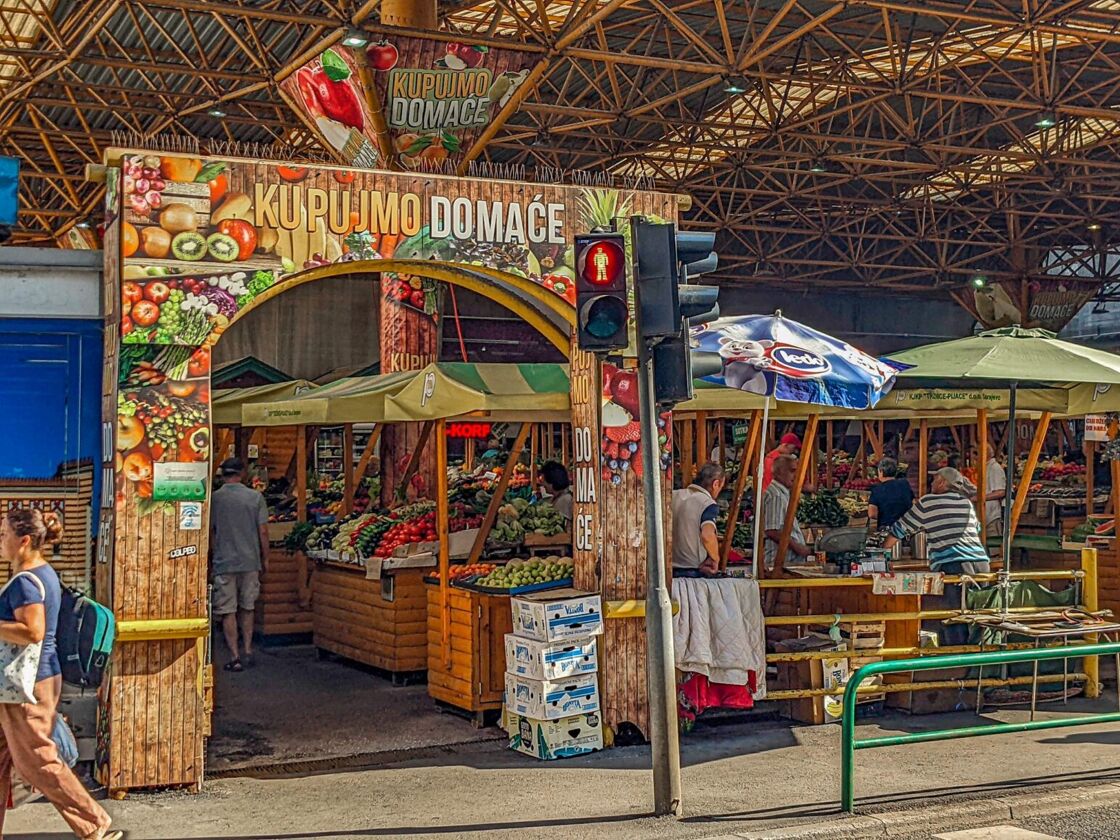
On one hand, even the poorest countries we’ve visited have some stores like the ones we knew back home: supermarkets, department stores, chain stores, and also specialty shops. But these places are more likely to be patronized by the country’s elite.
On the other hand, the poorer or more traditional the country, the more likely it is to have public markets like Fethiye’s Tuesday Market.
Related
The insider’s guide on where to party, stay, shop, and eat in Chicago
Get the inside scoop on Chicago’s LGBTQ+ culture. From bar-hopping tips to hidden gems, explore the city like a local with this guide.
I’ve also visited souks, bazaars, tianguis, street markets, wet markets, and hawker centers. And I’ve often seen goods for sale in ways even more informal than that — from vendors selling goods from pop-up stalls, roaming carts, or blankets spread on the sidewalk.
That’s even the technical term for these two kinds of retail: “informal” versus “formal.”
Generally speaking, formal retail businesses are taxed and tightly regulated: they are licensed and inspected to comply with government regulations on safety, minimum wage, and all the rest.
As for regulation of informal retail, well, that very much depends.
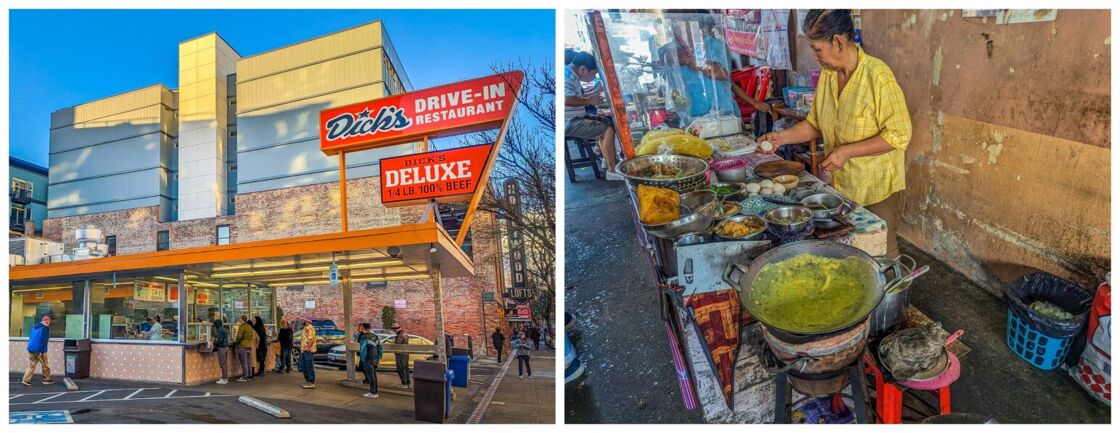
In America, flea markets, swap meets, and garage sales are a kind of informal retail. But those tend to involve used household items — they’re not places for daily shopping frequented by large swaths of the local population.
And America’s “farmers’ markets” have an illusion of informality, but let’s get real. With their high-end offerings and upscale clientele, these are nothing like the markets I’m talking about.
Ditto for blatant tourist attractions like Seattle’s Pike Place Market.

Widespread informal retail can be downright fascinating to those unfamiliar with it, and also fairly overwhelming.
In our second year of travel, Brent and I spent several months living in Hội An, Vietnam, and the large outdoor market near our homestay was colorful and chaotic.
The vendor who sold pork? She announced her wares by prominently displaying a decapitated hog’s head on her table. (Who knows? Maybe that was for sale too.) Other vendors had cages of nervous geese and buckets of flopping shrimp.
This wasn’t like shopping at Safeway.
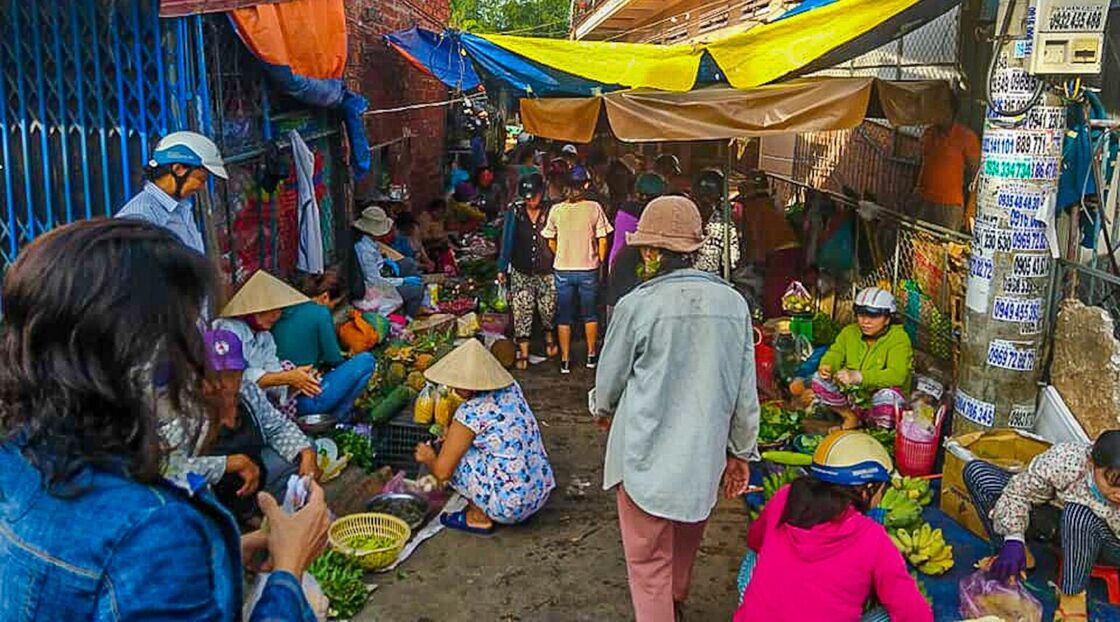
But by the time we left Vietnam, shopping there felt almost as normal to me as shopping at Safeway. And come on: food doesn’t get any fresher or more locally sourced.
Brent and I are currently living in San Miguel de Allende, Mexico, and I quickly discovered the city’s huge Tuesday Tianguis, a weekly market that I was initially shocked to find out was so big it filled a massive covered space — only to discover that first area was connected to two more covered areas just as large.
Wandering that market, I’ve seen cages filled with parakeets, ducks, pigeons, and rabbits; bins filled with dried peppers and bags brimming with beans; bubbling pots of pork and pans filled with gorditas; stacks of roasted corn; and piles of shoes, pants, and shirts.
Everywhere I turned, I was surrounded by evidence that I was in Mexico.
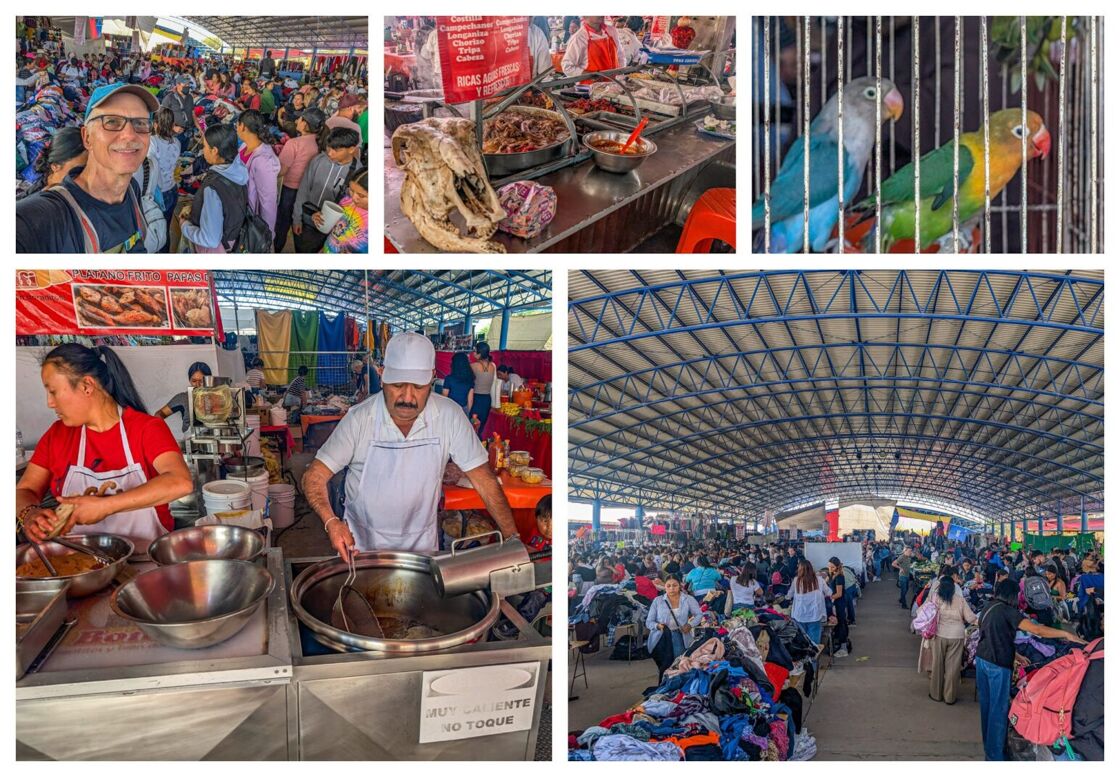
But how can anyone be confident in what they’re buying if informal markets like San Miguel de Allende’s Tuesday Tianguis are so lightly regulated?
This is probably because vendors don’t survive long in their communities if they acquire a reputation for cheating patrons or selling inferior products.
As for the price, well, that depends on what you’re willing to pay, since even on the rare occasions when informal markets have price tags, most things are still negotiable.
In other words, in a very real way, these merchants and their customers regulate themselves.
Maybe this is why the woman I buy my produce from at a different market here in San Miguel de Allende always throws an extra mango and avocado into my bag — it’s just good business.
Plus, in general, Mexicans are unbelievably friendly.
These markets are also very obviously social hubs as much as they are places of commerce — places to meet friends, visit neighbors, eat meals, and gossip and discuss what’s going on in town. It creates community bonds and a strong sense of social trust.
It’s hard not to compare this to America, too. Theoretically, formal retail can play the same role in a society as these markets do—strengthening social bonds. Even in America, people enjoy going downtown, to the mall, or to the grocery store.
But with services like DoorDash and Amazon allowing Americans to shop online and have their merchandise delivered directly to their door, shopping experiences that are also social interactions are becoming less common.
It was depressing to be back in America in March, shopping in various stores, and seeing all the security measures now in use in many places: gates controlling entry in and out of stores, the elimination of handheld baskets to thwart shoplifters, merchandise behind lock-and-key, and security guards stationed at the exits checking receipts.
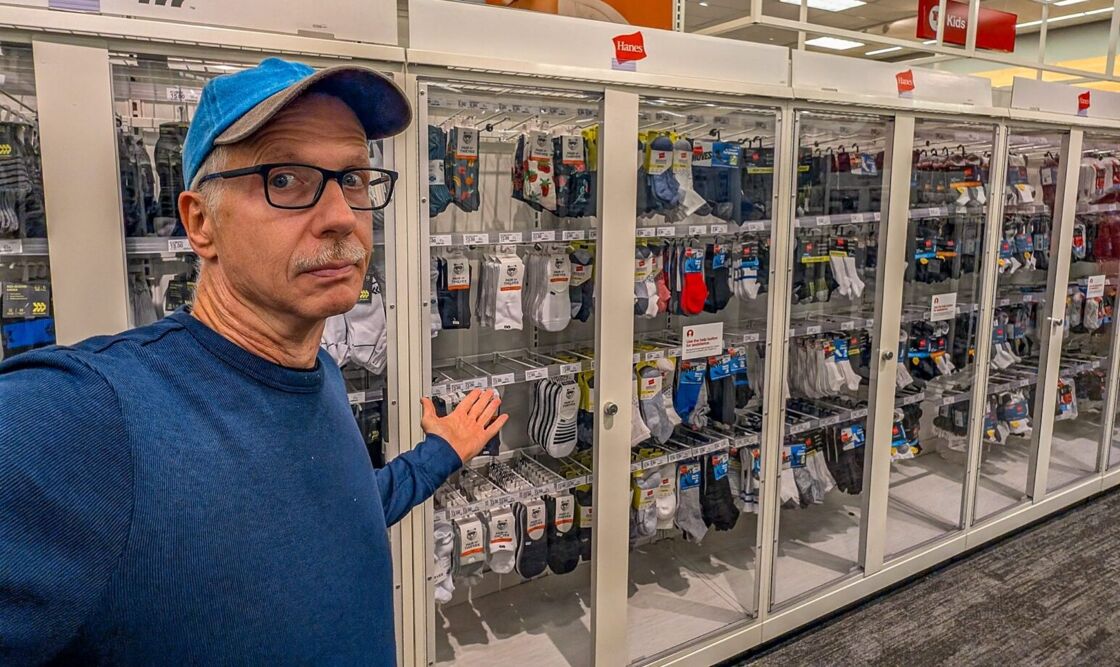
Honestly, it was far more upsetting than that hog’s head in Vietnam, because it seemed to indicate a complete lack of social trust.
And maybe it’s all connected: perhaps some of this lack of trust has come about because America became so cavalier about community in the first place.
Which isn’t to say that America’s formal retail doesn’t still have some advantages, at least for Brent and me.
Brent once bought an “extra-large” shirt at a market in Thailand, only to bring it home and discover that Thai men are very slim, and it was far too small for him; public markets rarely have dressing rooms.
I also bought a pair of shoes at a weekly market in Italy, only to have them disintegrate two days later during a hike on Italy’s Cinque Terre.
In informal retail, there is no “return policy” concept, at least for non-locals like us.
These days, Brent and I enjoy the best of both worlds, happily employing a mix of both informal and formal retail.
For our produce, gifts for friends back home, and street food, we love shopping in the world’s souks, bazaars, tianguis, and yes, even the occasional stall, cart, or blanket right on the street.
But I confess that for toiletries and most of our clothes—especially our shoes—we currently stick with formal retail in the U.S., where we know we can get exactly the size we want and the brands we can rely on.
At the same time, we’re increasingly depressed by all the anti-theft devices and security gates reminding us how little Americans now trust each other.
There has to be a better way.
Join the GayCities newsletter for weekly updates on the best LGBTQ+ destinations and events—nearby and around the world.

 Mark
Mark 





